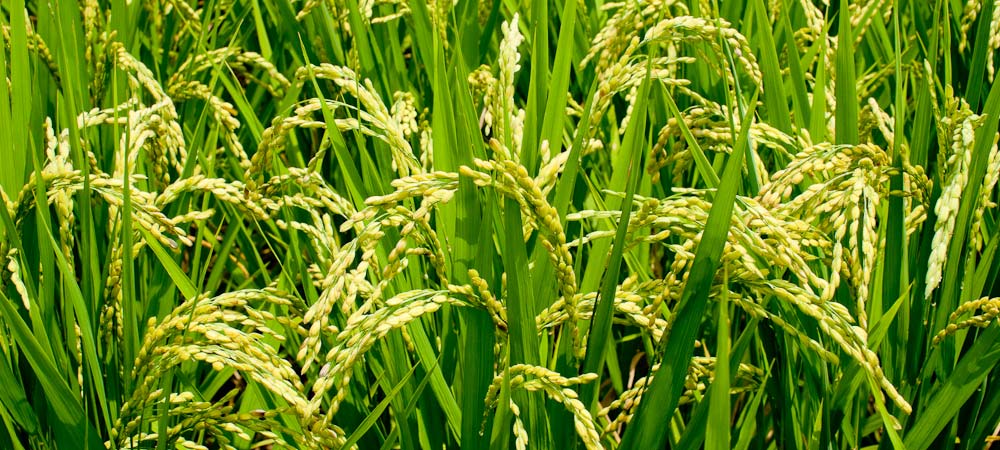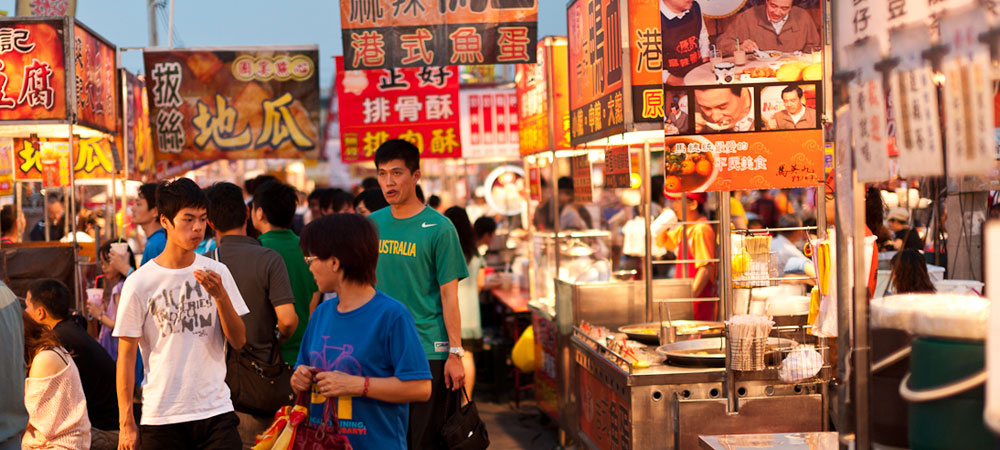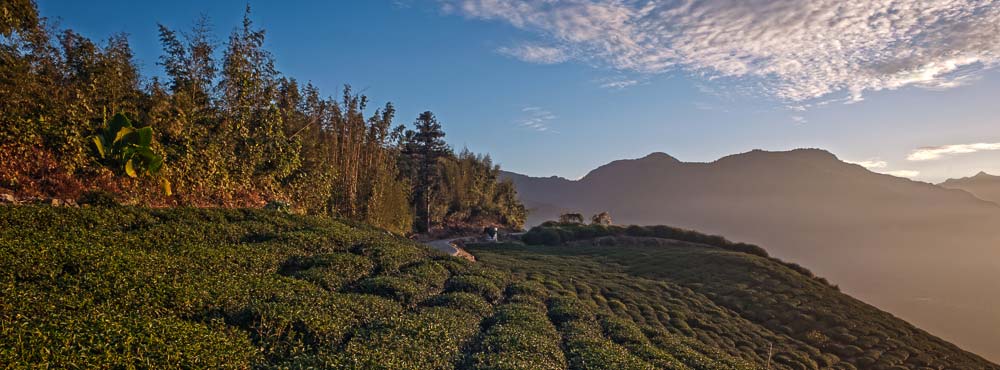Food & Drink in Taiwan

There are nations which eat to live and nations which live to eat. Like the French, the Taiwanese are most certainly one of the latter. Major cities like Taipei and Taichung have thousands of restaurants which cater for every budget and market demographic. In addition to the cooking styles developed by Taiwan’s earliest Han settlers and the country’s indigenous people, Chinese regional cuisines are well represented: spicy Sichuan (Szechuan) food is widely available, as are Cantonese and Shanghai-style delicacies. Some ‘mainlander’ eateries are second- or third-generation businesses, having been started by supporters of Chiang Kai-shek who fled to Taiwan around 1949; others are far newer, and were established by Chinese who married Taiwanese and have settled on the island since the 1990s.
Eating out is so convenient and inexpensive that few single people bother cooking. Modern micro-apartments often lack any kind of kitchen. In families where both the mother and father work full-time, meals are usually takeouts or put together by a grandparent. Because of the influence of Buddhism, I-Kuan Tao, and other similar sects, vegetarian cuisine is found everywhere.
Taiwanese people are passionate about local cuisine, but that doesn’t mean they’ve no interest in what’s served up in other countries. Japanese food has long had a place in the hearts and stomachs of Taiwanese. In Taipei, there’s a smattering of halal restaurants, while Taichung has some good Indian eateries. Dig around, and you’ll come across Turkish, German, Latin American, and other cuisines.
Taiwanese tea is justly famous, but in recent decades the island has developed a serious caffeine habit, in terms of both quantity and quality. Coffee shops can be found everywhere, and good coffee is grown in the south.

Staple foods
Taiwanese cuisine is similar to Chinese cuisine, so meals tend to be based around white rice, while pork is the most commonly eaten meat. Since World War II, chicken has become very common. Shredded turkey served with gravy on white rice is a dish associated with the laid-back southern city of Chiayi. Beef is widely enjoyed, except by the small portion of the population who for traditional (rather than religious) reasons never consume it. Exotic meats include snake and turtle. Noodles made from wheat or rice flour are popular. Thin soups are served with almost every meal. Taiwanese food is seldom very spicy or very salty. Those who live in the north of the island say southern fare tends to be sweeter.
Most of the rice eaten in Taiwan is grown on the island, with certain parts of Hualien and Taitung being renowned for the quality of their grains. Taiwan also grows an immense range of vegetables. Cabbage is a staple. Considered a rather dreary leafy green by many Westerners, in the hands of Taiwanese cooks it becomes a delicious stir-fry with garlic, a dash of soy sauce, and sometimes a splash of rice wine. Cauliflower, broccoli, asparagus, eggplants, carrots, and potatoes are widely consumed. Taros and sweet potatoes are minor sources of carbohydrates. Bean sprouts are actually the sprouts of mung beans — the beans themselves are turned into semi-sweet desserts and drinks — and they’re stir-fried or added to noodle soups. Brussels sprouts aren’t common, but imported celery and lettuces grown indoors are widely available.
As you’d expect on an island, Taiwanese people eat a lot of seafood, especially tilapia, mackerel, tuna, squid and shark. About a quarter of the fish eaten — milkfish and eels in particular — are farmed rather than caught from the sea. In many seafood restaurants, diners can choose what they want to eat from large tanks where live fish, lobsters and other sea creatures are kept. Harbour towns like Kezailiao and Donggang are especially good places to enjoy Taiwan’s seafood, yet you needn’t go further than the nearest night market to savour an oyster omelette. These snack-sized delights are cooked on hot plates by adding leafy greens, starch and a sweet-and-sour sauce to eggs and oysters.
During winter, Taiwanese people like to gather around hot pots. Somewhat like fondues, these contain hot broth in which you simmer slices of meat, vegetables, mushrooms, mussels, chunks of tofu, and other delectables until they’re done just as you like them. Dozens of different hot pots are available, including ferociously spicy and vegetarian variants, milk-flavoured broths, and soups packed full of medicinal herbs.
Indigenous food
Taiwan’s Austronesian indigenous minority has multiple ways of cooking, and the food they serve up is highly rated. Among Western visitors impressed by aboriginal delicacies was Andrew Zimmern, who sampled high-mountain bees and a specialty known as damamian during the Taiwan episode of his TV series Bizarre Foods. This mixture of raw pork, rice, and salt is fermented in a jar for a fortnight or longer — and it tastes way better than it sounds.
There are 16 tribes and thus several indigenous cuisines. Even within tribes there are distinct culinary customs. Inland Amis clans, for instance make use of mountain plants and animals; but for those living on the coast, seafood and seaweed are staples. Generalizations can be made, however: Indigenous people seem to eat a lot of meat, and those who live in the mountains get much of it by hunting. Roasting and barbecuing are popular. Small fish and shrimp caught in mountain creeks are eaten alongside foraged vegetables. In the past, millet, yams, and taros were more important than rice to Taiwan’s indigenous people. If you attend a tribal festival, you’ll likely see millet-based dishes such as ahvai (a Paiwan dish made from fermented millet and pork). Naturally, animals that roam Taiwan’s mountains — Reeve’s Muntjac, wild dove, mountain boar and mountain chicken are some examples — often appear on the table during indigenous feasts.
Aboriginal restaurants can be found in many parts of Taiwan, including the Alishan region.
Vegetarian feasts
In Taiwan, vegetarians are spoiled for choice. Because of religious traditions, many Taiwanese don’t eat meat two days each lunar month, while a significant number are full-time vegetarians. In addition to not consuming animal flesh and offal, Taiwanese vegetarians typically also avoid onions, leeks, and garlic, which they believe overstimulate the senses. There aren’t many vegans in Taiwan, but in major cities you’ll find a number of vegan eating options.
Taiwanese vegetarian fare is delicious and can be enjoyed in dedicated restaurants in every neighbourhood. In addition to the usual white rice, these places often provide noodles and whole-grain rice as options. Many dishes are fried, but an even bigger surprise awaits those who don’t eat meat because they simply dislike it: Many vegetarian restaurants offer ‘mock meat’ made from tofu and other non-animal proteins. Among them are pink hams, ribs, and even juicy steaks.
Night markets
Roadside food vendors have been a feature of Taiwanese towns since time immemorial. Often they gathered in front of busy temples. However, it wasn’t until after World War II that sprawling night markets, each with a hundred or more stalls selling hot, ready-to-eat food, appeared. Migration was a major factor. Many of the Chinese mainlanders who fled to Taiwan in the late 1940s were penniless and took up hawking as a way to survive. At the same time, industrialisation brought swarms of country folk to the cities. These blue-collar families typically lived in cramped tenements, so places where they could enjoy cheap entertainment and tasty snacks were hugely popular.
A few generations on, Taiwan is an affluent society, yet people haven’t lost their taste for food-stall delicacies like stinky tofu. In case you’re wondering, stinky tofu doesn’t really smell any worse than cheese, and has a delicious savoury taste. In every night market, there are famous stalls which have been in business for decades. Customers sometimes have to queue to enjoy these must-try specialties, but even these seldom cost more than a few dollars. In fact, almost everything sold in Taiwan’s night markets is very inexpensive, meaning they’re not only fascinating for adventurous eaters, but also great places to go if you’re hunting for souvenirs or little gifts.
Taiwan’s biggest evening bazaar is Fengjia Night Market in Taichung. In the capital, Ningxia Night Market is both very central and very popular, so much so that at the weekend it sometimes gets uncomfortably crowded; the nearest metro station is Shuanglian on the Red Line.
Taiwan’s premium teas
Tea has been a cash crop in Taiwan for more than 150 years, and in the final quarter of the 19th century it was one of the island’s first major exports to the West. British and American tea fanatics snapped up ‘Formosa oolong’ as quickly as expatriate businessmen based in Tamsui could package and ship it.
In recent years, Taiwan’s tea industry has emphasized quality over quantity. Output is lower than it was in the 1970s but the reputation of Taiwanese tea has never been higher. It’s now a premium product auctioned for high prices and relished by connoisseurs. If you buy a cup of ‘bubble milk tea’ (also known as ‘pearl milk tea’) the tea element of the concoction will likely have been imported from Vietnam or Sri Lanka.
Almost with exception, Taiwanese teas — be they black, green, or oolong — are made from the leaves and leaf buds of the Camellia sinensis var. sinensis, a subspecies of the tea plant native to south China. (By contrast, Indian teas are produced from Camellia sinensis var. assamica, also known as Indian or Assam tea). Green teas are produced from leaves which have undergone minimal oxidation; these infusions are increasingly popular throughout the developed world for health reasons. Black teas are fully oxidized, while oolongs are withered under the sun and allowed to oxidize in part. Oolong varieties include pouchong and Oriental Beauty. Packets of dried tea (and also tea bags of all kinds) are available throughout Taiwan and make excellent, lightweight souvenirs.
Tea is grown in many parts of the island, including the outskirts of Taipei and near Sun Moon Lake. If you drive up to Alishan, you’ll pass through the important and scenically beautiful tea-growing district of Shizhuo.
Taiwan’s coffee
Few people outside the island know it, but Taiwan produces excellent arabica coffee in addition to its superb teas. A British trade company introduced the first coffee seedlings in 1884 and during the Japanese colonial period output grew steadily. However, when World War II broke out, almost all of Taiwan’s coffee plantations were cleared so food crops could be planted, and during the grim post-war period coffee-growing was neglected. In 1958, an assessment by the United States Department of Agriculture concluded that coffee grown in Taiwan’s hills was every bit as good as Central American arabica.
Per capita coffee consumption has increased every year since the 1960s, but it wasn’t until the 1990s that coffee was once again grown locally in significant quantities. Most coffee farms are 500 to 1000 m (1,640 to 3,281 ft) above sea level. Even now, for every tonne of coffee grown in Taiwan, more than 30 are imported. Coffee-growing districts such as Tainan’s Dongshan and Yunlin’s Gukeng have become popular with caffeine-loving tourists who enjoy soaking up rural scenery while sipping lattes. One of Taiwan’s coffee stars is Jacky Lai, the owner of coffee houses in Hsinchu and Kaohsiung. Lai took first place at the 2014 World Coffee Roasting Championship. Two years later, Taiwan’s Berg Wu was crowned World Barista Champion in Dublin. And in 2022, Sherry Hsu was crowned World Brewers Cup Champion at the Melbourne International Coffee Expo.
Alcoholic drinks in Taiwan
Taiwan produces a wide range of alcoholic beverages, including beers, wines made from grapes and other fruits, vodka, whisky, and some very potent liquors.
Until the 1990s, Taiwan’s alcohol industry was controlled by a single state-owned company, the entity now known as TTL. It still makes Taiwan Beer (you’ll see the white-and-blue cans in shops throughout the island) plus Gold Medal Taiwan Beer, a slightly more expensive variant that has won prizes in international competitions. These German-American-style amber lagers are a little sweeter than many Western beers because rice is added to the fermentation process. They go well with seafood and spicy dishes. Beerhouses tend to serve strongly-flavoured kuaichao (‘quick fried’) or rechao (‘hot stir-fried’) dishes like pineapple shrimp balls, clams stir-fried with garlic and basil, three-cup chicken, and three-cup king oyster mushrooms.
The alcohol market is now open to all-comers. In addition to a greater choice of imported drinks — whisky imported from Scotland is very often cheaper in Taiwan than it is in the UK — dozens of wineries and microbreweries have set up shop. One of these startups, King Car Kavalan Distillery, garnered attention beyond Taiwan when it won a 2010 blind-tasting contest against some well-known Scottish whiskies. In early 2015, Kavalan’s Solist Vinho Barrique was named the best single malt whisky on Earth at the World Whiskies Awards. Cocktail culture is catching on, especially in the capital.
Several of Taiwan’s indigenous tribes have alcohol-making traditions, and in most cases the drink they produce is based on millet and brewed without distillation. Usually cloudy and quite sweet, it’s best enjoyed as an aperitif or a digestif. The alcohol content seldom approaches 20 percent.
Taiwan’s single most famous liquor is called Kaoliang. This clear, drink is made from fermented sorghum (a type of grain), and some versions are 58 percent alcohol. Several brands are available, the most famous being produced in Kinmen and the Matsu Islands. One Matsu brand is named Tunnel 88, after the former military base where the liquor is aged for five or more years.
Rice wine, cheap but seldom drunk by itself, is used in a lot of Taiwanese stews, especially those consumed during the winter. During religious rites, tiny cups of rice wine are offered to the gods.



